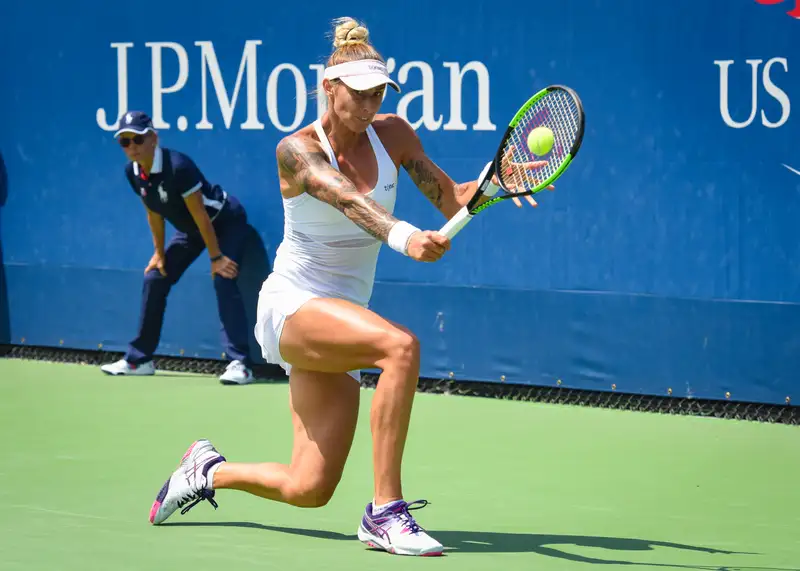In a recent study, researchers utilized Artificial Intelligence (AI) and machine learning (ML) to analyze game statistics and career trajectories of elite junior female tennis players. By examining tournament outcomes and subsequent professional rankings, the research aimed to identify key variables influencing success in junior and professional tennis, contributing to a deeper understanding of the sport’s complexities.
Tennis, a globally popular sport demanding a confluence of technical, tactical, and mental skills, has become a complex field of study influenced by many factors. With over 89 million players worldwide, including a substantial junior cohort, the sport’s transition from junior to professional levels presents unique challenges and opportunities.
This transition, often referred to as the Junior-to-Senior Transition (JST), is a critical phase in the development of young athletes. This period, lasting one to four years, is marked by non-linear processes, heightened sociocultural barriers, increased expectations, and demands for mental resilience amid significant psychological stress. Athletes navigating this transition describe it as a pivotal and challenging period in their careers. JST contributes to a dropout rate of up to two-thirds among junior athletes, highlighting the need for a comprehensive understanding of the factors influencing success during this critical phase.
AI and ML have emerged as powerful tools in unraveling the complexities of sports, offering insights into individual and team performance, career trajectories, tactical patterns, and injury prevention. Using AI in tennis, particularly in analyzing game statistics, holds promise for identifying key variables that contribute to match, tournament, or season success.
The present study focused on elite junior female tennis players, aiming to employ AI techniques to forecast tournament outcomes and evaluate the impact of participation and performance in elite junior tournaments on subsequent professional careers. The intricate analysis included the exploration of game statistic variations between players who participated in elite junior tournaments and those who did not, particularly within the professional Women’s Tennis Association (WTA) league. By delving into continuous (percentage-based) and cumulative (count-based) game statistics, the research sought to enhance our understanding of the nuanced factors shaping career trajectories in women’s tennis.
Methodology and Findings
Cubic regression functions were calculated to understand relationships between selected predictors and response variables. An AI approach employing ML algorithms was used for predictions. The dataset, categorized for classification AI models, underwent cross-validation. Area Under the Curve (AUC) values assessed model performance. Neural network AI models were also developed for predicting WTA rank.
Predicting final junior tournament ranks without considering player statistics achieved an 87.5% accuracy, emphasizing the significance of non-game characteristics. However, the accuracy decreased for AI models incorporating player statistics, suggesting their limited effectiveness in forecasting future careers.
Out of 240 elite junior players, 58.75% transitioned to the WTA, with 24.58% achieving a top 500 ranking. Participation in elite junior tournaments significantly influenced future careers, even for host country participants. However, predicting success or reaching the professional league using the same variables proved challenging.
Key Influences and Recommendations
Detailed analyses revealed influential factors in determining player rankings, such as the number of singles matches played, points, aces, and return points won. A model incorporating these factors achieved a test accuracy of 79.07%, emphasizing the importance of match participation. Improving the serve, investing in young talents through international junior tournaments, and focusing on match participation emerged as key recommendations based on the analysis.
The age and number of singles matches played were identified as significant factors, suggesting that consistent match participation positively influences rankings. Examples of top players, like Iga Swiatek, underscored the potential impact of junior tournament involvement on future success.
Conclusion
The study encompassed four key objectives: predicting junior tennis outcomes with AI, assessing the impact of elite junior tournament participation on careers, analyzing game-statistic disparities, and predicting WTA rankings. While AI accurately predicted junior outcomes, player statistics were less effective in forecasting future careers. Junior tournament participation was linked to increased confidence and visibility, suggesting non-game factors contribute to success. Notably, 58.75% of junior elite players transitioned to professional competition, emphasizing the tournament’s role in shaping careers. Predicting professional success via AI models faced challenges, requiring refinement with additional variables.
Analysis of WJTF participants versus non-participants in the top 300 WTA revealed significant differences, highlighting the influence of junior tournaments. The study recommended enhancing training programs, emphasizing serve improvement, and supporting young talents through international tournaments. Noteworthy findings included the importance of age in breakthroughs to top rankings and the multifactorial nature of tennis variables. Despite robust methodology and a large sample, certain limitations, including data constraints and the complexity of tennis dynamics, should be acknowledged. Future research should consider broader samples and additional variables for a nuanced understanding of tennis dynamics.
In conclusion, using an ML approach, the study successfully predicted junior tennis tournament outcomes (87.5% accuracy) but found limited precision in forecasting athletes’ future careers using selected variables. While a quarter of elite junior players reached the top 500 WTA rankings, crucial predictors for long-term success were not identified. Participation in elite junior tournaments emerged as a significant factor in players’ future careers, supported by host country participants’ success.




